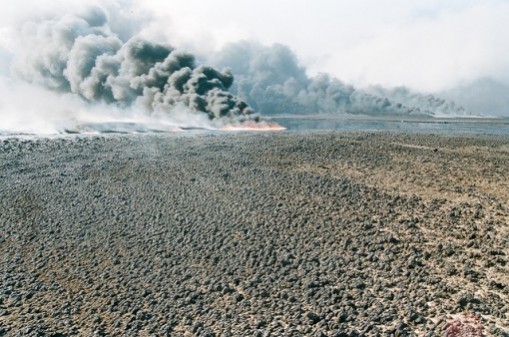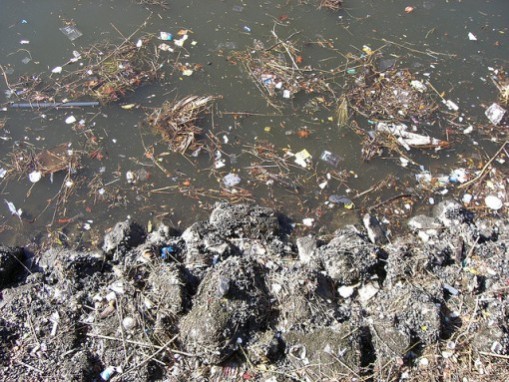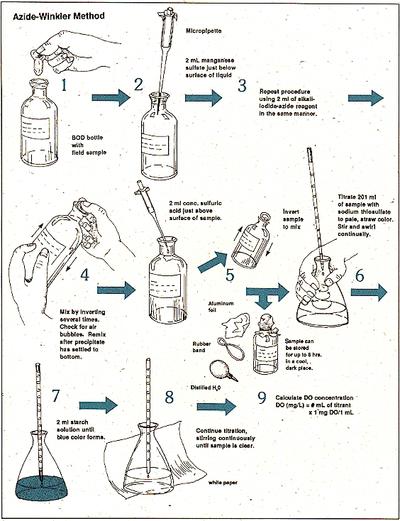EE-Unit-IV Composting
Composting is the natural process of ‘rotting’ or decomposition of organic matter by microorganisms under controlled conditions. Raw organic materials such as crop residues, animal wastes, food garbage, some municipal wastes and suitable industrial wastes, enhance their suitability for application to the soil as a fertilizing resource, after having undergone composting.
Compost is a rich source of organic matter. Soil organic matter plays an important role in sustaining soil fertility, and hence in sustainable agricultural production. In addition to being a source of plant nutrient, it improves the physico-chemical and biological properties of the soil. As a result of these improvements, the soil: (i) becomes more resistant to stresses such as drought, diseases and toxicity; (ii) helps the crop in improved uptake of plant nutrients; and (iii) possesses an active nutrient cycling capacity because of vigorous microbial activity. These advantages manifest themselves in reduced cropping risks, higher yields and lower outlays on inorganic fertilizers for farmers.
Types of composting
Composting may be divided into two categories by the nature of the decomposition process. In anaerobic composting, decomposition occurs where oxygen (O) is absent or in limited supply. Under this method, anaerobic micro-organisms dominate and develop intermediate compounds including methane, organic acids, hydrogen sulphide and other substances. In the absence of O, these compounds accumulate and are not metabolized further. Many of these compounds have strong odours and some present phytotoxicity. As anaerobic composting is a low-temperature process, it leaves weed seeds and pathogens intact. Moreover, the process usually takes longer than aerobic composting. These drawbacks often offset the merits of this process, viz. little work involved and fewer nutrients lost during the process.
Aerobic composting takes place in the presence of ample O. In this process, aerobic microorganisms break down organic matter and produce carbon dioxide (CO2), ammonia, water, heat and humus, the relatively stable organic end product. Although aerobic composting may produce intermediate compounds such as organic acids, aerobic micro-organisms decompose them further. The resultant compost, with its relatively unstable form of organic matter, has little risk of phytotoxicity. The heat generated accelerates the breakdown of proteins, fats and complex carbohydrates such as cellulose and hemi-cellulose. Hence, the processing time is shorter. Moreover, this process destroys many micro-organisms that are human or plant pathogens, as well as weed seeds, provided it undergoes sufficiently high temperature. Although more nutrients are lost from the materials by aerobic composting, it is considered more efficient and useful than anaerobic composting for agricultural production. Most of this publication focuses on aerobic composting.
Composting objectives may also be achieved through the enzymatic degradation of organic materials as they pass through the digestive system of earthworms. This process is termed vermicomposting.
The aerobic composting process
The aerobic composting process starts with the formation of the pile. In many cases, the temperature rises rapidly to 70-80 °C within the first couple of days. First, mesophilic organisms (optimum growth temperature range = 20-45 °C) multiply rapidly on the readily available sugars and amino acids (Figure 1). They generate heat by their own metabolism and raise the temperature to a point where their own activities become suppressed. Then a few thermophilic fungi and several thermophilic bacteria (optimum growth temperature range = 50-70 °C or more) continue the process, raising the temperature of the material to 65 °C or higher. This peak heating phase is important for the quality of the compost as the heat kills pathogens and weed seeds.
The active composting stage is followed by a curing stage, and the pile temperature decreases gradually. The start of this phase is identified when turning no longer reheats the pile. At this stage, another group of thermophilic fungi starts to grow. These fungi bring about a major phase of decomposition of plant cell-wall materials such as cellulose and hemi-cellulose. Curing of the compost provides a safety net against the risks of using immature compost such as nitrogen (N) hunger, O deficiency, and toxic effects of organic acids on plants.
Eventually, the temperature declines to ambient temperature. By the time composting is completed, the pile becomes more uniform and less active biologically although mesophilic organisms recolonize the compost. The material becomes dark brown to black in colour. The particles reduce in size and become consistent and soil-like in texture. In the process, the amount of humus increases, the ratio of carbon to nitrogen (C:N) decreases, pH neutralizes, and the exchange capacity of the material increases.
FIGURE 1
Temperature changes and fungi populations in wheat straw compost

Note:
Solid line = temperature; broken line = mesophilic fungi population; dotted line = thermophilic fungi population; left y-axis = fungal populations (logarithm of colony forming units (cfu) per gram of compost plated onto agar); right y-axis = temperature in centre of compost. a, b, c and d = heating phases.
Source: http://helios.bto.ed.ac.uk/bto/microbes/thermo.htm
Factors affecting aerobic composting
Aeration
Aerobic composting requires large amounts of O, particularly at the initial stage. Aeration is the source of O, and, thus, indispensable for aerobic composting. Where the supply of O is not sufficient, the growth of aerobic micro-organisms is limited, resulting in slower decomposition. Moreover, aeration removes excessive heat, water vapour and other gases trapped in the pile. Heat removal is particularly important in warm climates as the risk of overheating and fire is higher. Therefore, good aeration is indispensable for efficient composting. It may be achieved by controlling the physical quality of the materials (particle size and moisture content), pile size and ventilation and by ensuring adequate frequency of turning.
Moisture
Moisture is necessary to support the metabolic activity of the micro-organisms. Composting materials should maintain a moisture content of 40-65 percent. Where the pile is too dry, composting occurs more slowly, while a moisture content in excess of 65 percent develops anaerobic conditions. In practice, it is advisable to start the pile with a moisture content of 50-60 percent, finishing at about 30 percent.
Nutrients
Micro-organisms require C, N, phosphorus (P) and potassium (K) as the primary nutrients. Of particular importance is the C:N ratio of raw materials. The optimal C:N ratio of raw materials is between 25:1 and 30:1 although ratios between 20:1 and 40:1 are also acceptable. Where the ratio is higher than 40:1, the growth of micro-organisms is limited, resulting in a longer composting time. A C:N ratio of less than 20:1 leads to underutilization of N and the excess may be lost to the atmosphere as ammonia or nitrous oxide, and odour can be a problem. The C:N ratio of the final product should be between about 10:1 and 15:1.
Temperature
The process of composting involves two temperature ranges: mesophilic and thermophilic. While the ideal temperature for the initial composting stage is 20-45 °C, at subsequent stages with the thermophilic organisms taking over, a temperature range of 50-70 °C may be ideal. High temperatures characterize the aerobic composting process and serve as signs of vigorous microbial activities. Pathogens are normally destroyed at 55 °C and above, while the critical point for elimination of weed seeds is 62 °C. Turnings and aeration can be used to regulate temperature.
Lignin content
Lignin is one of the main constituents of plant cell walls, and its complex chemical structure makes it highly resistant to microbial degradation (Richard, 1996). This nature of lignin has two implications. One is that lignin reduces the bioavailability of the other cell-wall constituents, making the actual C:N ratio (viz. ratio of biodegradable C to N) lower than the one normally cited. The other is that lignin serves as a porosity enhancer, which creates favourable conditions for aerobic composting. Therefore, while the addition of lignin-decomposing fungi may in some cases increase available C, accelerate composting and reduce N loss, in other cases it may result in a higher actual C:N ratio and poor porosity, both of which prolong composting time.
Polyphenols
Polyphenols include hydrolysable and condensed tannins (Schorth, 2003). Insoluble condensed tannins bind the cell walls and proteins and make them physically or chemically less accessible to decomposers. Soluble condensed and hydrolysable tannins react with proteins and reduce their microbial degradation and thus N release. Polyphenols and lignin are attracting more attention as inhibiting factors. Palm et al. (2001) suggest that the contents of these two substances be used to classify organic materials for more efficient on-farm natural resource utilization, including composting.
pH value
Although the natural buffering effect of the composting process lends itself to accepting material with a wide range of pH, the pH level should not exceed eight. At higher pH levels, more ammonia gas is generated and may be lost to the atmosphere.

![sanitary landfill [Credit: iStockphoto/Thinkstock]](http://media-2.web.britannica.com/eb-media/02/141102-004-1616F200.jpg)
![sanitary landfill [Credit: Encyclopædia Britannica, Inc.]](http://media-2.web.britannica.com/eb-media/36/22436-049-19CA10FE.jpg)
![sanitary landfill [Credit: Encyclopædia Britannica, Inc.]](http://media-2.web.britannica.com/eb-media/57/23957-004-3C63B850.jpg)
![recycling: role in solid-waste disposal [Credit: Encyclopædia Britannica, Inc.]](http://media-2.web.britannica.com/eb-media/79/22279-049-2A8F743E.jpg)
![refuse disposal system: plastic bins filled with recyclable materials waiting to be picked up [Credit: Ted Russell—Photographer’s Choice/Getty Images]](http://media-2.web.britannica.com/eb-media/55/93355-004-22414DDB.jpg)












